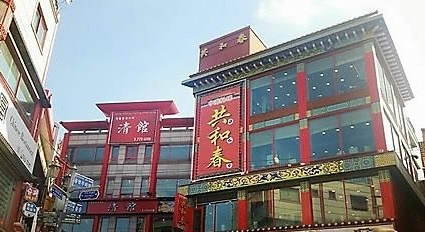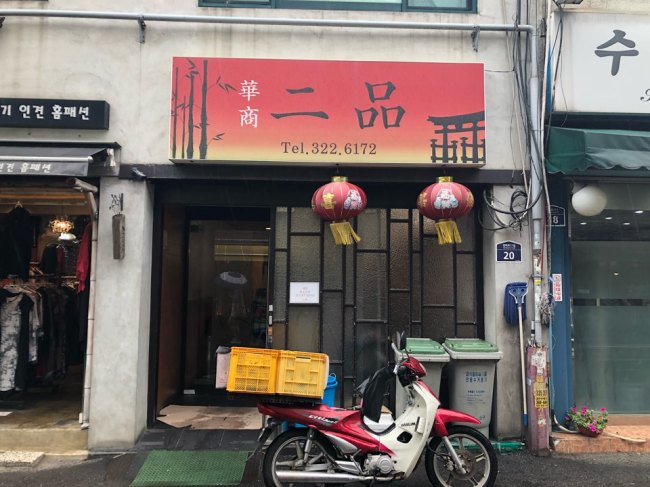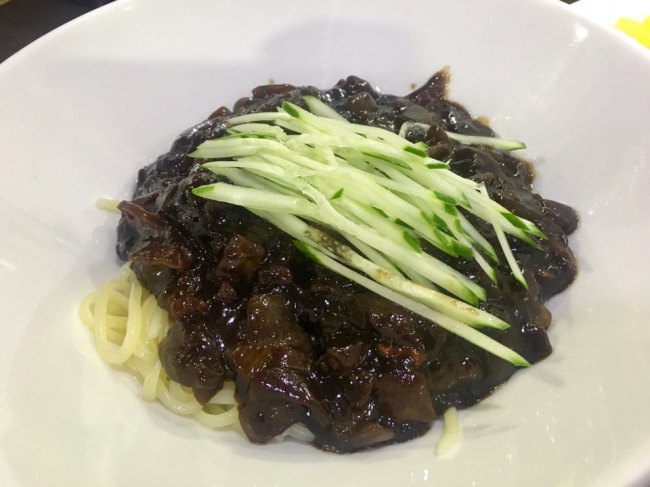Though more simply referred to as “Chinese food,” the Chinese dishes served in Korea are different from the authentic Chinese food of China.
Chinese food is well known for being adapted by other cultures. For example, chow mein, orange chicken and broccoli beef are clearly not authentic representations of true Chinese food, but they now form a separate genre of cuisine: American-Chinese.
In Korea, the country’s own version of the blend exists as well, due to the close geographical and cultural ties between the two countries. Many of the Korean-Chinese dishes are inspired by dishes from the Shandong Province in China as a large number of immigrants from the area settled here.
 |
China Town in Incheon (Nadine Lee/The Korea Herald) |
Though derived from Chinese dishes, the dishes found here are quite different from the originals.
Frequently, the dishes have been “Koreanized” with Korean spices and recipes.
Stephanie Wong is a Chinese-American tourist in Seoul. Having lived in China and the US, she noted that Korean-Chinese food is nothing like what she had imagined.
“I was super excited to try it when I came here. I had very high expectations, after many of my Chinese friends who visited Korea told me that they loved the Chinese food in Korea,” Wong said.
“The Korean-Chinese food tastes as if it uses many more ingredients and spices than Chinese food, there are so many flavors in one bite,” she added. “Once I tried it myself, it was so delicious I ate it two more times and even got it delivered to my hotel.”
The delivery service is probably one of the defining features of Korean-Chinese food culture. Many eateries only deliver and Koreans like to have the food delivered to their doorsteps.
 |
A delivery motorcycle is parked in front of a Chinese restaurant in Yeonhui-dong. (Nadine Lee / The Korea Herald) |
Three signature dishes of delivered Korean-Chinese food are jajangmyeon, jjamppong and tangsuyuk.
Jajangmyeon was first served at Gonghwachun, a restaurant in Incheon’s Chinatown, west of Seoul. The simple bowl of noodle with thick sauce made of chunjang, pork and vegetables was inspired by classic Chinese dish zhajiangmian.
 |
Jajangmyeon (By Im Eun-byel / The Korea Herald) |
After Korean dramas went popular in China, some restaurants in China started to serve the Korean version of the dish as the Chinese viewers wanted to taste the dish that the Korean celebrities were having on screen.
Jjamppong is the “sister” of jajangmyeon. Its origin is a bit more complex. It derived from a Japanese-Chinese dish called chanpon. The noodle dish served in a spicy red broth with a lot of seafood.
Tangsuyuk, a deep-fried meat dish served with sweet and sour sauce, is another all-time national favorite. It was adapted from Shandong style Chinese dish, tangcurou.
An area in Seoul famous for Chinese restaurants is Yeonhui-dong, originally heavily populated by Chinese immigrants.
A Korean woman in her late 40s was visiting the area recently with her friends after people recommended the area to her for having many tasty Chinese restaurants.
“Getting Chinese food delivered is more for convenience and to eat something quickly. It lacks the experience,” she said. “I came here to really indulge in the food, the taste and the experience.”
Yeonhui-dong is not the only option when it comes to enjoying the Korean-Chinese cuisine experience. Hwayang-dong, Myeong-dong, as well Incheon, where Korea’s biggest Chinatown is located, are all areas heavily populated by Chinese immigrants and also famous for the Korean-Chinese restaurants.
“Only available in Korea and with Chinese roots and inspiration, Korean-Chinese food is a unique and perfect blend of flavors that bring two cultures together,” an owner of a Korean-Chinese restaurant in Myeong-dong said. “It is more than just a cuisine.”
By Nadine Lee, Intern reporter (
nadine@heraldcorp.com)










